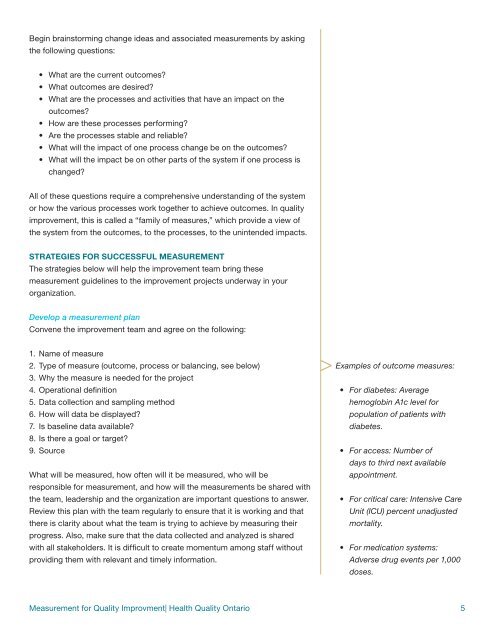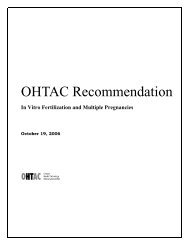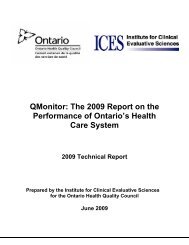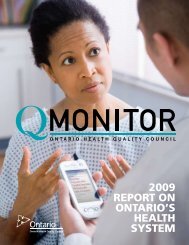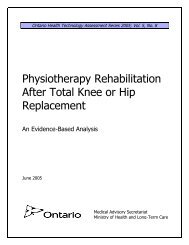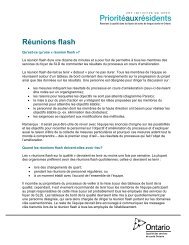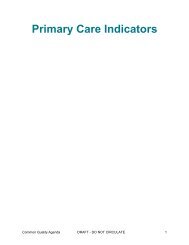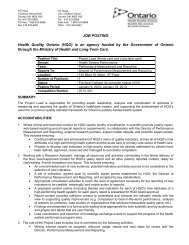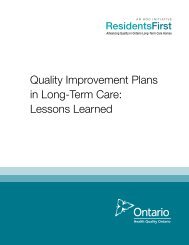Measurement for Quality Improvement - Health Quality Ontario
Measurement for Quality Improvement - Health Quality Ontario
Measurement for Quality Improvement - Health Quality Ontario
You also want an ePaper? Increase the reach of your titles
YUMPU automatically turns print PDFs into web optimized ePapers that Google loves.
Begin brainstorming change ideas and associated measurements by asking<br />
the following questions:<br />
• What are the current outcomes?<br />
• What outcomes are desired?<br />
• What are the processes and activities that have an impact on the<br />
outcomes?<br />
• How are these processes per<strong>for</strong>ming?<br />
• Are the processes stable and reliable?<br />
• What will the impact of one process change be on the outcomes?<br />
• What will the impact be on other parts of the system if one process is<br />
changed?<br />
All of these questions require a comprehensive understanding of the system<br />
or how the various processes work together to achieve outcomes. In quality<br />
improvement, this is called a “family of measures,” which provide a view of<br />
the system from the outcomes, to the processes, to the unintended impacts.<br />
STRATEGIES FOR SUCCESSFUL MEASUREMENT<br />
The strategies below will help the improvement team bring these<br />
measurement guidelines to the improvement projects underway in your<br />
organization.<br />
Develop a measurement plan<br />
Convene the improvement team and agree on the following:<br />
1. Name of measure<br />
2. Type of measure (outcome, process or balancing, see below)<br />
3. Why the measure is needed <strong>for</strong> the project<br />
4. Operational definition<br />
5. Data collection and sampling method<br />
6. How will data be displayed?<br />
7. Is baseline data available?<br />
8. Is there a goal or target?<br />
9. Source<br />
What will be measured, how often will it be measured, who will be<br />
responsible <strong>for</strong> measurement, and how will the measurements be shared with<br />
the team, leadership and the organization are important questions to answer.<br />
Review this plan with the team regularly to ensure that it is working and that<br />
there is clarity about what the team is trying to achieve by measuring their<br />
progress. Also, make sure that the data collected and analyzed is shared<br />
with all stakeholders. It is difficult to create momentum among staff without<br />
providing them with relevant and timely in<strong>for</strong>mation.<br />
><br />
Examples of outcome measures:<br />
• For diabetes: Average<br />
hemoglobin A1c level <strong>for</strong><br />
population of patients with<br />
diabetes.<br />
• For access: Number of<br />
days to third next available<br />
appointment.<br />
• For critical care: Intensive Care<br />
Unit (ICU) percent unadjusted<br />
mortality.<br />
• For medication systems:<br />
Adverse drug events per 1,000<br />
doses.<br />
<strong>Measurement</strong> <strong>for</strong> <strong>Quality</strong> Improvment| <strong>Health</strong> <strong>Quality</strong> <strong>Ontario</strong> 5


